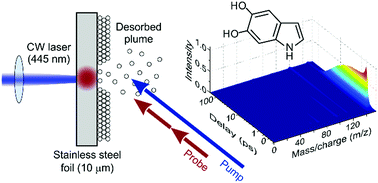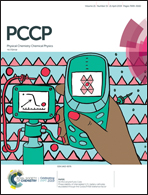Dynamics of electronically excited states in the eumelanin building block 5,6-dihydroxyindole†
Abstract
We report the first excited state dynamics study of gas-phase 5,6-dihydroxyindole (5,6-DHI), a key building block of eumelanin pigments that are found throughout nature and serve as important photo-protective compounds. Time-resolved ion-yield measurements over the 241–296 nm ultraviolet photoexcitation region revealed non-adiabatic processes occurring on up to three distinct timescales. These reflect ultrafast (i.e. sub-picosecond) internal conversion within the excited state singlet manifold, and much longer-lived processes ranging from 10 ps to in excess of 1 ns. Our investigation paves the way for precisely targeted future studies of 5,6-DHI that exploit more differential measurement techniques. The work was facilitated by the use of soft laser-based thermal desorption to introduce 5,6-DHI samples into the gas phase. This approach, based on low-cost, readily available diode lasers, is straightforward, easily controllable and potentially applicable to a wide range of non-volatile molecular species.



 Please wait while we load your content...
Please wait while we load your content...